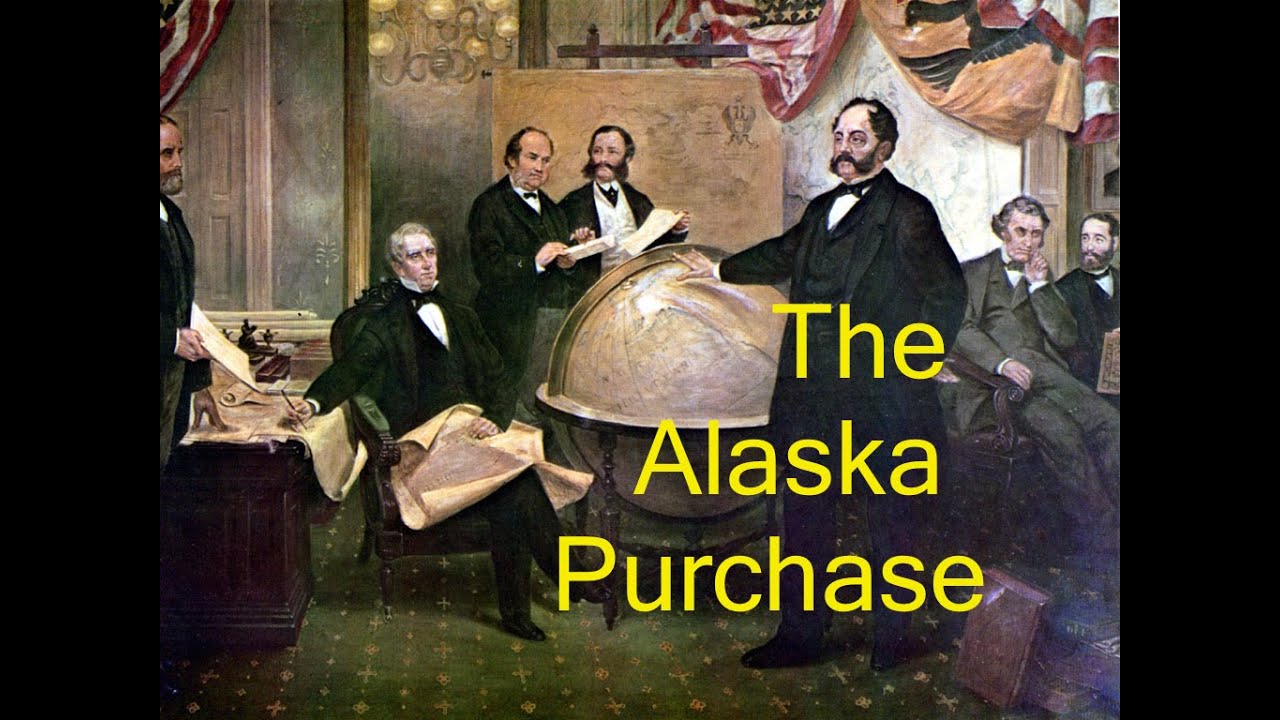
The Alaska Purchase – From ‘Russian America’ to U.S. Statehood – A Historical Insight
GK & Current Affairs for CLAT | CLAT Current Affairs 2026
Powered by CLAT Gurukul – Best online coaching for CLAT
Introduction
The history of Alaska’s acquisition by the United States offers a fascinating case study of geopolitics, diplomacy, and economic foresight. On March 30, 1867, U.S. Secretary of State William H. Seward signed a $7.2 million deal to acquire Alaska from the Russian Empire. What was once dismissed as “Seward’s Folly” turned into a strategic and resource-rich expansion of American territory.
This episode is significant for students preparing for CLAT Current Affairs 2026, as it intersects with international relations, colonial history, economic diplomacy, and U.S.-Russia ties. Moreover, with recent meetings between Donald Trump and Vladimir Putin in Alaska, the historical backdrop of “Russian America” once again came into focus in global media. At CLAT Gurukul, the best online coaching for CLAT, we emphasize understanding such historical events not just as past facts but as building blocks for analyzing contemporary international affairs.
Why in News?
- Trump-Putin Meeting in Alaska (2025) – The recent high-level diplomatic engagement brought renewed attention to Alaska’s historical ties with Russia.
- Historical Resonance – Alaska was once part of “Russian America” before being sold to the U.S. in 1867, making it an important reference point in U.S.-Russia relations.
- Geopolitical Importance – In the 21st century, Alaska holds significance for its oil reserves, strategic Arctic location, and U.S. military presence, which is vital in the context of global power competition.
- Media Relevance – Newspapers revisited the Alaska Purchase (1867), its initial criticism, and its eventual transformation into a valuable U.S. state.
Thus, the article is in the news because a modern diplomatic summit has revived interest in the history of Alaska’s transfer from Russia to the U.S., a story that continues to have implications for international law, global diplomacy, and strategic resources.
Point-wise Summary of the Content
- The Alaska Purchase (1867)
- On March 30, 1867, U.S. Secretary of State William H. Seward purchased Alaska from Russia for $7.2 million.
- Newspapers mocked the deal, calling it “Seward’s Folly”, “Seward’s Icebox”, and even “Walrussia,” considering Alaska to be a frozen wasteland.
- However, Seward considered it the most significant act of his career.
- Russian America – Early Human Presence
- Humans lived in Alaska as early as 14,000 BCE, crossing over via a land bridge (Bering Strait).
- These foraging groups eventually became the indigenous Alaskan populations.
- By 10,000 years ago, rising sea levels cut off Alaska from the rest of the world, shaping its unique identity.
- Russian Entry into Alaska
- In the 18th century, Russian expeditions funded by St. Petersburg and led by explorers like Vitus Bering charted Alaska’s coasts.
- In 1799, the Russian-American Company, the first Russian joint-stock company, was established to exploit Alaska’s resources and expand settlements.
- Settlements like Novo-Arkhangelsk (Sitka) were founded, and Russia’s reach extended as far as California.
- Resource Exploitation and Decline
- By mid-19th century, Russians hunted sea otters, seals, and whales extensively, leading to near extinction of some species.
- Alaska was seen as “Siberia’s Siberia” — a distant, costly, and unprofitable colony draining Russian finances.
- The Crimean War (1853–56) worsened Russia’s economic and strategic position, forcing it to reconsider keeping Alaska.
- Decision to Sell Alaska
- In 1857, Russian Grand Duke Constantine urged the Tsar to sell Alaska, citing:
- Financial burden of maintaining Alaska.
- Fear of losing it in war (especially to Britain).
- Belief that Americans would eventually dominate North America.
- After years of on-and-off negotiations, the U.S. deal was finalized in 1867.
- U.S. Enthusiasm – “Not a Folly After All”
- Seward’s vision was expansive: he hoped Alaska would lead to U.S. influence in Hawaii, Canada, and even Asia.
- Though initially unpopular, his foresight proved correct as Alaska later yielded gold, oil, and military advantages.
- Alaska’s Economic Transformation
- Gold Rush (1880s): Discovery of gold in southeastern Alaska attracted thousands.
- Oil Boom (1968): Discovery of oil in Prudhoe Bay transformed Alaska into a vital energy hub.
- Alaska’s wealth in oil, gas, and fisheries made it a cornerstone of U.S. economy and energy security.
- Alaska’s Modern Strategic Importance
- Alaska remains crucial for the U.S. Arctic strategy, military bases, and global shipping routes.
- It is also central to U.S.-Russia relations given its geographical proximity.
Notes – Peculiar Terms Explained
- Seward’s Folly – A sarcastic term used by critics to mock the Alaska Purchase, suggesting it was a foolish deal.
- Russian-American Company – A joint-stock company established in 1799 to colonize Alaska and exploit its natural resources.
- Crimean War (1853–56) – A conflict where Russia was defeated by an alliance of France, Britain, the Ottoman Empire, and Sardinia, weakening Russian global power.
- Novo-Arkhangelsk (Sitka) – The capital of Russian America, now a U.S. city in Alaska.
- Prudhoe Bay – Site of Alaska’s major oil discovery in 1968, which transformed its economic importance.
- Siberia’s Siberia – Nickname for Alaska under Russian control, indicating its remoteness and unprofitability.
- Gold Rush – A period in the late 19th century when discovery of gold led to massive migration and economic activity in Alaska.
Legal, Political, and Historical Context
- International Law Dimension
- The Alaska Purchase reflects the legal principle of territorial transfer through treaties.
- Such cases remain relevant in boundary disputes and international arbitration.
- Geopolitical Angle
- Alaska highlights the strategic use of land acquisitions to secure resources and influence.
- The U.S. later used Alaska’s position for Cold War defense and continues to do so against Russia and China.
- Economic and Environmental Impact
- The discovery of oil and gas made Alaska an energy hub but also created debates over environmental sustainability and indigenous rights.
Analytical Insights
- From Mockery to Strategic Masterstroke – What was once derided as a waste of money became a cornerstone of U.S. power in the Arctic and Pacific.
- Russia’s Short-Sightedness – Selling Alaska for quick financial relief proved to be a long-term strategic loss for Russia.
- Expansionist America – Seward’s vision reflected the Manifest Destiny ideology, pushing U.S. influence beyond its continental borders.
- Modern Relevance – The Trump-Putin meeting in Alaska underlines how the region remains a symbol of U.S.-Russia geopolitical rivalry.
Conclusion
The story of Alaska’s purchase shows how history often vindicates long-term vision over short-term criticism. Seward’s foresight, once mocked, turned Alaska into a treasure chest of resources, a strategic defense outpost, and a symbol of American expansionism.
For CLAT Current Affairs 2026, this episode is an important reminder of how territorial acquisitions shape international relations, global trade, and national security. At CLAT Gurukul, the best online coaching for CLAT, we encourage students to see beyond surface narratives and appreciate the deeper geopolitical, legal, and economic dimensions of such events.
The Alaska Purchase remains a timeless lesson in strategic statecraft — transforming “Seward’s Folly” into America’s Arctic frontier of destiny.
This Blog is Powered by CLAT Gurukul — India’s Leading Law Entrance Prep Platform
At CLAT Gurukul, we believe in empowering future legal minds with the right blend of knowledge, strategy, and mentorship. This blog is a reflection of our commitment to quality content that not only helps aspirants stay updated but also sharpens their conceptual clarity.
Why CLAT Gurukul?
- Personalized Mentorship by Top Legal Educators
- Comprehensive Study Materials & Legal Updates
- Daily Practice Sets, Mocks & Performance Tracking
- Result-Oriented Strategy for CLAT, AILET, and CUET
Whether you’re reading this article to deepen your understanding or to stay ahead in your exam prep — you’re already one step closer with CLAT Gurukul by your side.
Join thousands of successful aspirants who trusted CLAT Gurukul and cracked India’s top law entrance exams.
Visit https://www.youtube.com/@CLATGurukul/shorts to learn more or speak to our experts now!
Note from CLAT Gurukul
At CLAT Gurukul, we are committed to providing free CLAT study material, including CLAT current affairs, legal reasoning practice sets, general knowledge updates, logical reasoning questions, English comprehension exercises, and more — all curated by top mentors.
Our blog section is regularly updated with high-quality CLAT content tailored to match the evolving pattern of the CLAT UG exam. Whether you’re looking for CLAT 2026 current affairs, CLAT legal reasoning passages, or mock practice sets, we have you covered.
We believe in open-access learning and will continue to publish free CLAT preparation resources to help serious aspirants succeed.
Explore more free content under categories like:
Best online coaching for CLAT, CLAT current affairs, CLAT GK updates, CLAT legal updates, CLAT logical reasoning, and CLAT English preparation.
For structured learning, daily mocks, and expert mentorship, visit https://www.youtube.com/@CLATGurukul/shorts — the Best CLAT Coaching in Patna and India’s most trusted platform for CLAT online coaching.




